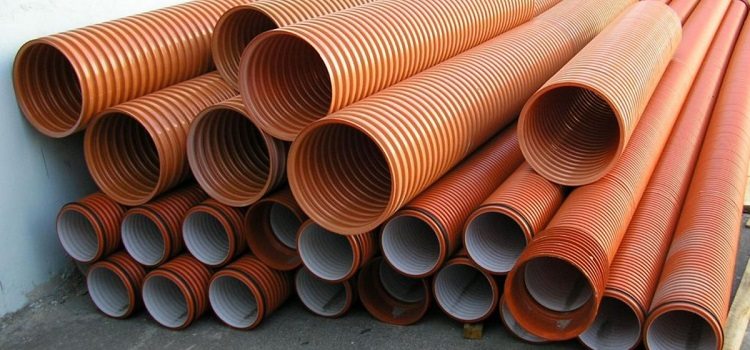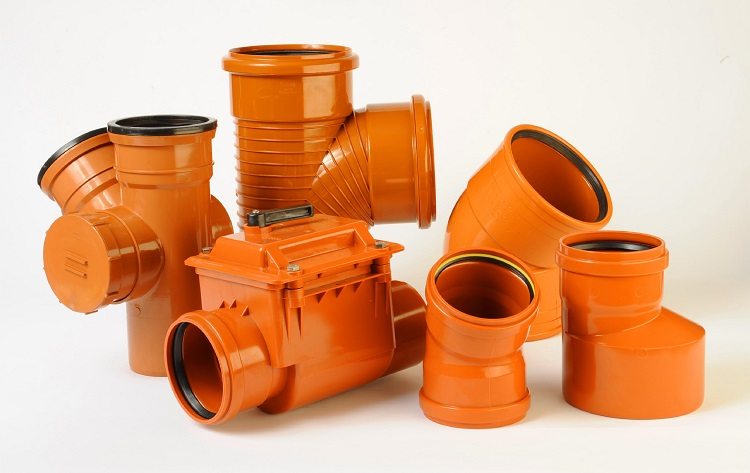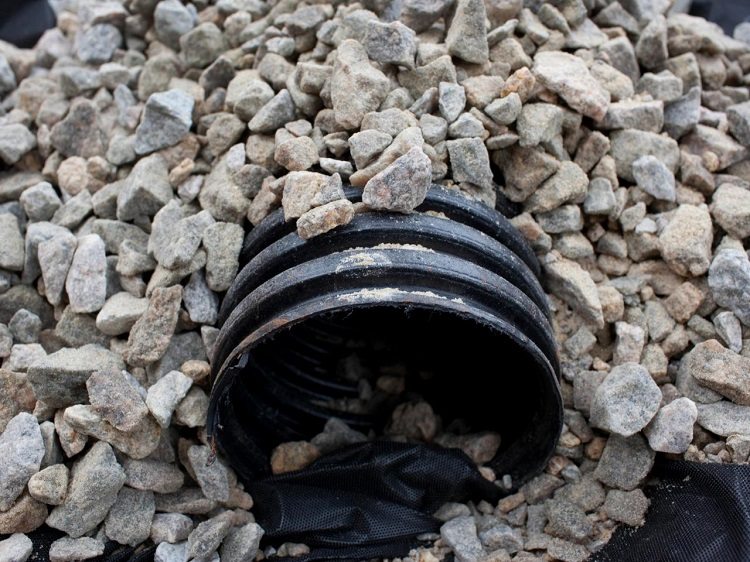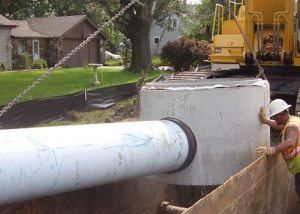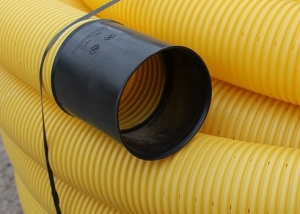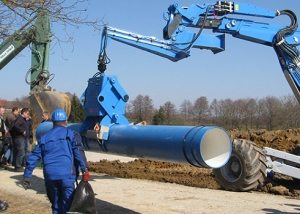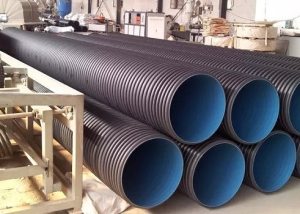Corrugated pipes made of plastic are widely used in many areas of human life. Due to their unique operational characteristics and economic feasibility, they quickly replaced their metal counterparts and won leading positions in this segment of the consumer market. Suffice it to say that today these products account for 25% of all pipe products manufactured in the world.
Content
Advantages and disadvantages of corrugated pipe
Having great flexibility and low weight, the corrugated plastic pipe provides ease of installation of any systems created on its basis: heating, sewage, water supply (hot and cold), as well as cable channels for electrical wiring. In addition, its use can significantly save on the purchase of connecting parts - couplings, fittings, curly elements, etc. Considerable contribution to the reduction of material costs brings the lack of the need to use equipment for welding. Of the other advantages of a plastic corrugated pipe, it is worth highlighting:
- long service life (50 ˗ 90 years);
- increased resistance to biological factors. This property is especially relevant for domestic sewage systems.;
- high resistance to chemical influences of hostile environment and corrosion resistance;
- no need to create complex supporting structures (low weight!), which leads to low operating costs;
- the cost of the plastic corrugated pipes themselves is available to the wallet of our average compatriot.
But there were some minuses here as well. These include:
- poor tolerance to high temperatures. If the value of this parameter of the working medium exceeds + 90˚, the plastic corrugation will begin to soften and deform. But in sewers, such high temperatures, as a rule, are not recorded during a long time interval;
- increased noise. This flaw is especially felt by residents of panel panels with high sound permeability. In such cases do sound insulation from any available materials.
Types of Corrugated Plastic Pipes
The range and variety of such plumbing products is very wide. Distinctive characteristics of these products are their purpose (external sewage or internal) and the material of manufacture. In addition, there may be specific differences in the shape of the profile, wall thickness, dimensions of the recesses, as well as the entire finished product.
Polypropylene, polyvinyl chloride and high-pressure polyethylene are used as raw materials for the manufacture of corrugated plastic pipes.
Helpful information! The highest strength characteristics have metal-plastic pipes. However, unlike products made from pure polymer, they cannot be sharply bent. So they can just burst.
In general, modern industry produces the following types of plastic corrugated pipes:
- single layer corrugated pipe. It weighs a little and has high flexibility. Used to protect gas pipelines and cables;
- corrugated double layer hose. It is used in the arrangement of cable ducts to protect electric cable lines in places with a high probability of damage;
- double layer corrugated pipe. It has the highest strength, chemical and mechanical stability. The main scope is sewer pipelines;
- electrical corrugated pipe. It is characterized by average indicators of flexibility, strength and mechanical stability. At the production stage, products of this type can be equipped with a cable made of metal wire. With its help, the convenience of laying cables and wires inside the corrugated pipe is provided.
According to their properties, corrugated pipes are divided into the following groups:
- the pipes are light. Due to the low mechanical stability, such products are unsuitable for use underground. Therefore, they are not laid in the ditch, but are used only for external installation;
- heavy plastic corrugated pipes. Characterized by mechanical stability of the average level. Applicable for arrangement of underground utilities;
- corrugated pipes are extra heavy. They have a high rate of mechanical strength. In view of this product of this type can be used when the pipeline is laid in specific conditions, for example, under a railway track or under a highway.
Design Features and Specifications
As mentioned above, plastic corrugated tubes are made of polypropylene, polyvinyl chloride and high-pressure polyethylene. The high reliability of these products is due to the complexity of such polymer compounds. The difference in their structure at the molecular level gives various properties to plastic corrugated pipes.
On the entire surface of these products there are recesses located at the same distance from each other. It is this constructive solution that provides flexibility and increased mechanical stability. And the strength characteristics are many times greater than the similar parameters of smooth polymer pipes.
Corrugated tube manufacturers adjust their degree of rigidity by thickening some rings. The harder they are, the corrugation will become more suitable for laying in a ditch. The recesses forming the corrugated structure of the sewer pipe are obtained by the technology of extrusion of polymer raw materials with a double wall.
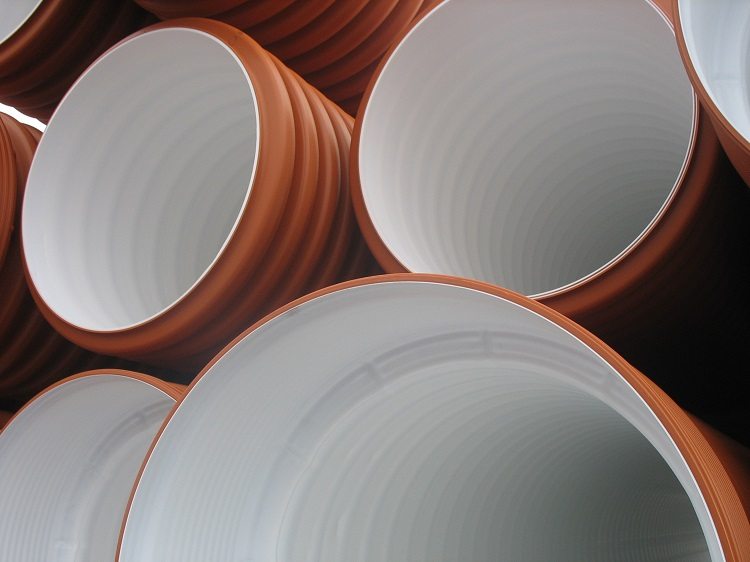
The inner surface of the two-layer corrugated pipes does not create obstacles to the movement of the working fluid through them
Helpful information! This production method allows us to produce corrugated pipe product with a perfectly smooth inner wall. Due to this, the waste is freely transported, does not leave sediment and does not form deposits.
Main characteristics sewer corrugated pipe is their weight, diameter, profile width and wall thickness. You will find the most common values for these parameters in the table below.
Table 1
| Outer diameter millimeters | Conditional pass, millimeters | Weight of 1 linear meter of pipe, kg | Weight of 1 linear meter of pipe, kg | Profile Width, millimeters | Wall thickness not less than, millimeters |
| 1200 | 1030 | 66,9 | 56,0 | 41 | 5,0 |
| 1000 | 851 | 51,7 | 40,5 | 39 | 5,0 |
| 800 | 678 | 33,1 | 24,5 | 37 | 4,1 |
| 630 | 535 | 20,3 | 17,7 | 30 | 3,3 |
| 500 | 427 | 13,2 | 12,0 | 23 | 2,8 |
| 400 | 343 | 8,7 | 7,0 | 20 | 2,3 |
| 315 | 271 | 5,70 | 4,60 | 16 | 1,9 |
| 250 | 216 | 3,70 | 2.90 | 14 | 1.7 |
| 200 | 176 | 2,50 | 1, 80 | 8 | 1,4 |
| 160 | 138 | 2,1 | 1,5 | 6 | 1,2 |
The correct choice of the size of the sewer pipe ensures high-quality installation of all sewage disposal systems and, accordingly, its subsequent effective operation.
How to lay a plastic corrugated pipe in a ditch
Arrivals on the territory of the personal plot of private houses are mandatory equipped with ditches.They prevent swamping of roads with excess moisture, but significantly impede the entry of vehicles into the compound. The best way out of this situation is to lay special corrugated drainage pipes in a ditch. With proper work, such products can withstand even significant loads created, for example, by the weight of KamAZ loaded with building materials.
The sequence of measures for laying pipes in the trench is as follows:
- The walls of the ditch are aligned. It is desirable to make slopes inclined.
- The device at the bottom of the so-called preparation for the drainage pipe. The simplest option is a sand cushion, but it is better to pour out the concrete and thus form a base of reinforced concrete, the layer thickness of which should exceed 10 - 15 centimeters.
- After laying the pipe on a prepared base, it is necessary to fill it with rubble of the middle fraction with a layer of about 30 centimeters.
- The main area of passage through the ditch should be filled with waterproofing material, such as clay. Be sure to tamp the ground.
- Before laying the roadway, it will be useful to create a layer of high density geotextile. It will ensure the redistribution of the load created by the transport over the entire area of the bridge in the ditch.
- At the final stage, work is underway to strengthen the embankment. For this, simple concreting, turf flooring or another available method is suitable.
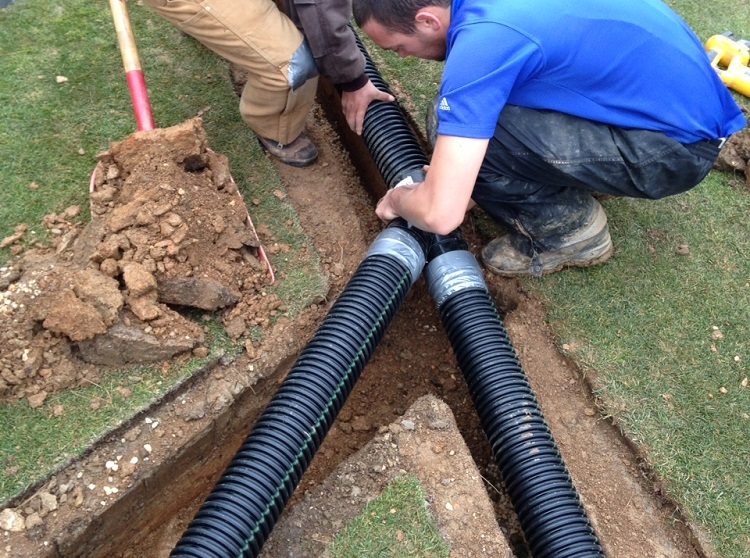
Regardless of the depth of the trench, its walls should be even and consistent with the diameter of the pipe
When choosing a plastic corrugated pipe for laying in a ditch, pay particular attention to its cross section. It should provide free passage of rain and groundwater at their maximum intensity. Water flowing in a ditch usually carries mountains of garbage. The easiest way to prevent it from entering the pipe is to install decorative grilles. Stop your choice on metal products, as they are characterized by increased strength.
Plastic corrugated tubes are an excellent alternative to standard tubular products. Most models demonstrate high quality, reliability and durability. Therefore, they are used in almost all types of sewage systems.
